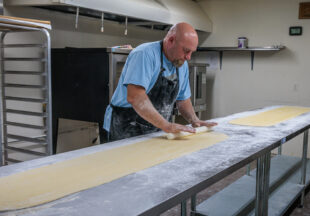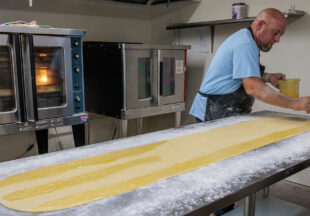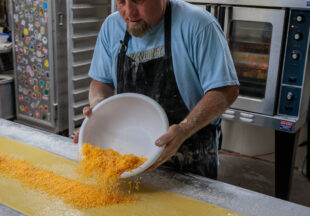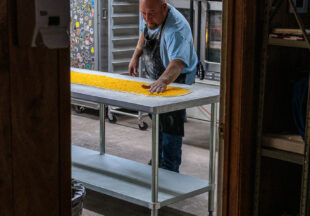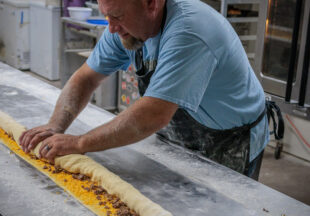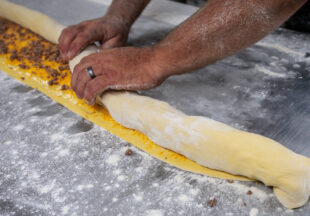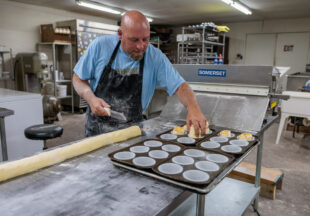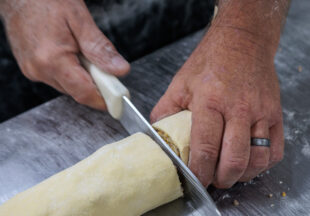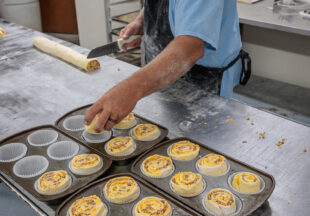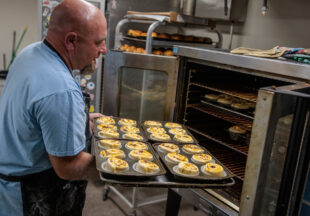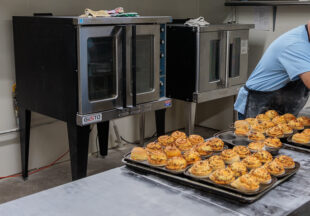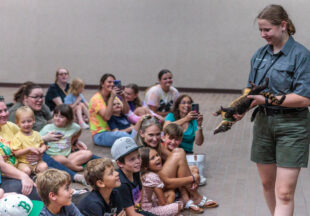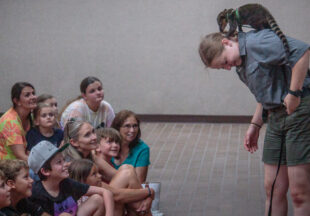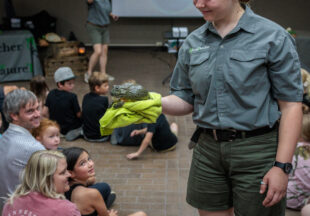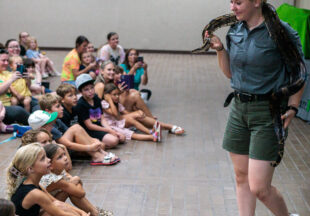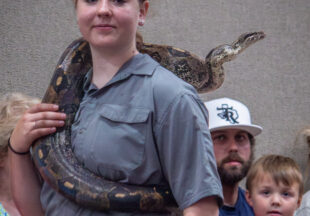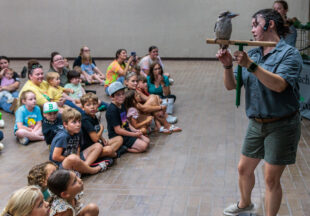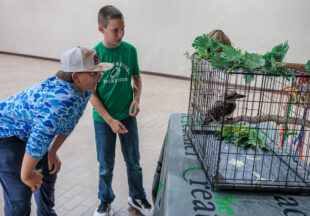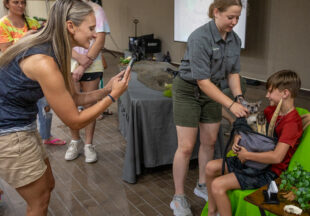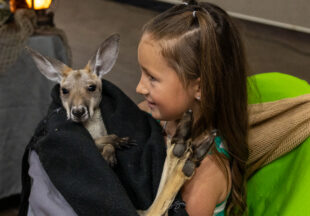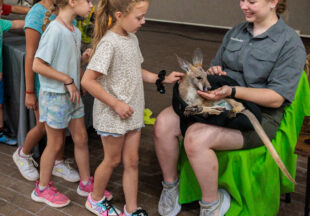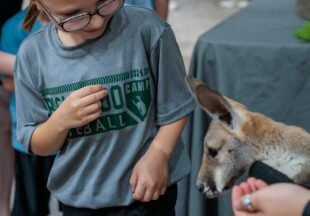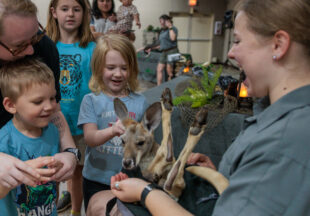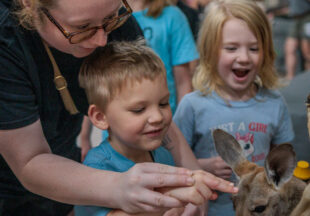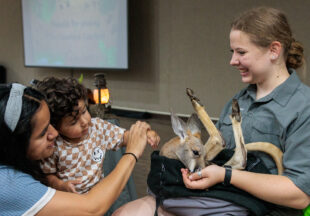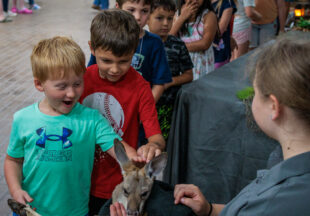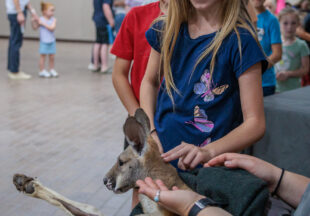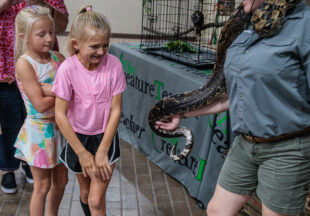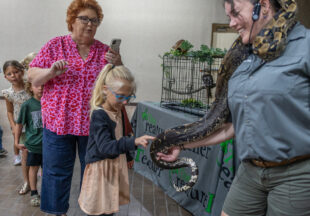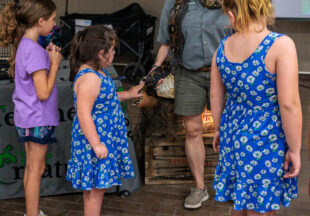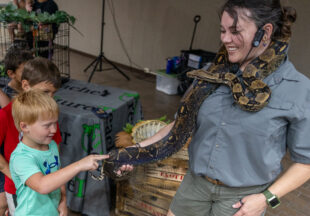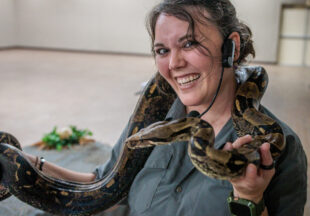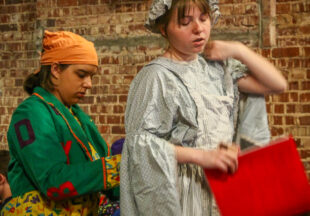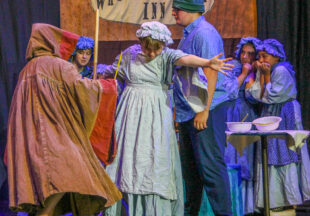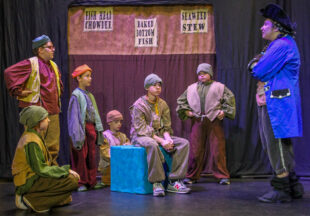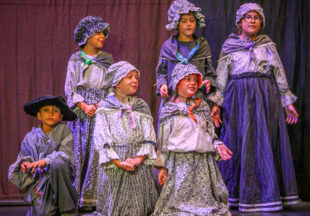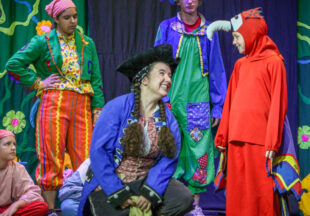Pigeon racers fly east to DFW Metroplex area after Breckenridge start on Saturday

By Tony Pilkington/Breckenridge Texan
When most people in Breckenridge think of cross country racers, they think of the Buckaroo Fall sports runners at the high school. And, when they think of sprinters, they think of the track athletes in the Spring. But on Saturday morning, a group of cross country sprinters took off from the lot in front of Walmart and headed for the DFW Metroplex. And, according William Edwards, who was there to start the race, most of the contestants would complete the 100-mile trek and arrive at their destination in less than a couple of hours.
It wasn’t Buckaroos in the race, though; it was pigeons. Racing pigeons, to be specific.
Edwards, who lives in Krum, is a member of the North Texas Concourse, a pigeon flying club that has about 80 flyers — members who own racing pigeons — in North Texas. He said they have flyers from all over North Texas, from Wichita Falls to Sherman, Dallas, Fort Worth and Denton.
On Saturday morning, he setup the organization’s “sprint” trailer in Breckenridge in the field in front of Walmart. When it was time to release the birds, he pulled a lever, opening the gates on the trailer and releasing the birds. He said Breckenridge is 100 miles from where the pigeons are headed.
In addition to the sprint trailer for the birds competing in the 100-mile race, Edwards said, they also had their regular trailer set up further west on I-20 for a 250-mile race. He said the sprint trailer holds about 300 birds, and the regular trailer for the 250-mile race can hold about 2,000 birds.
The racing pigeons in each trailer are from many different owners in the club, he said. Once the birds are released, they will fly back to their own homes. The gates are opened at a certain time, and the birds are timed by the speed it takes them to get home; and that’s how they pick the winner.
Edwards said the birds travel at around 60 miles per hour and many of the birds were expected to get back home before he did. “I’m right at 100 miles, I think, so they’ll be back in…an hour and 40 minutes,” he said. “You can’t beat them back home. The winners, when you drive up to your place, they’re already in the lofts.”
He said the majority of the birds get back home the same day. “If they don’t get back today, the ones that kind of get turned around, they’ll be back tomorrow. Yeah, they’ll stop and get a drink somewhere. And rest overnight, and then come back in the morning,” he said.
Edwards made two bird releases from the trailer in Breckenridge on Saturday. The first group, he said, were sprint birds actually competing in the race. The second group was what are called trainers that are not ready to compete yet but are able to make it back to their locations.
“If you have birds that aren’t part of the race, then…it’s fair to wait 30 minutes so they’re not with the other birds. So you don’t have trainers that drag them off course, because that’s not fair,” he said.
The group uses a different starting location for their races each year, he said, and will come to Breckenridge about every four years. “Every year, we’ll switch around to different directions, four different directions — north, south, east, and west. So it’s fair for everybody, because some guys that live in Dallas, so it’s longer for them, right,” he said. “So when we switch back to the east, it’s closer for them. So it makes it fair for everybody. If you live north or if you’re down south, east or west, it gives everybody every year a different fair shot to feel like they’re closer.”
Edwards has been racing pigeons since he was a kid and was taught by his dad taught how to do it. He said the pigeons are like racehorses and have pedigrees. A lot of them he said have papers, where you can go back five generations and see where they came from.
“Pigeons are kind of unique, because they’re different than dogs and cows and racehorses. Birds when you breed them, their genetics, you can breed them and adapt traits faster than you can with dogs and whatnot,” he said. “We’ve just been breeding them and breeding them. They’ve just been getting faster and faster and better and better, just like racehorses.”
Getting the birds ready to race is a step-by-step training process, he said.
“Well, you fly them around your house, and that probably takes about six weeks,” he explained. “And then you’ll start taking them out different distances. You’ll start like maybe across a pasture, you let him go, and then you go out a mile. And maybe you might go out three miles and five miles, 10 miles, 15 miles…once you get to about 50 miles, you’re good to go anywhere. You let him go in New Mexico, and they’ll come back home.”
He said when the birds are loaded into the trailer, they are scanned into a computer which tracks all their information. He said they are also on GPS and scanners. “And so when they go over the guy’s scanner, it clocks them into the internet,” he said. “So I can see it on my iPhone, we have a phone app. So when I get home, I can just ‘bing.’”
Edwards said their group is part of the American Racing Pigeon Union, a national association. “They’re based out of Oklahoma. And so they keep points for people all over the nation. And so you can win a national title,” he said.

William Edwards was in Breckenridge on Saturday to release racing pigeons for his racing club. (Photo by Tony Pilkington/Breckenridge Texan)
Cutline, top photo: William Edwards with the North Texas Concourse pigeon flying club watches the trained pigeons take off after releasing them from a trailer near Walmart on Saturday morning. Edwards brought the pigeons to Breckenridge so they could be released for a 100-mile sprint race to the DFW Metroplex. (Photo by Tony Pilkington/Breckenridge Texan.)










